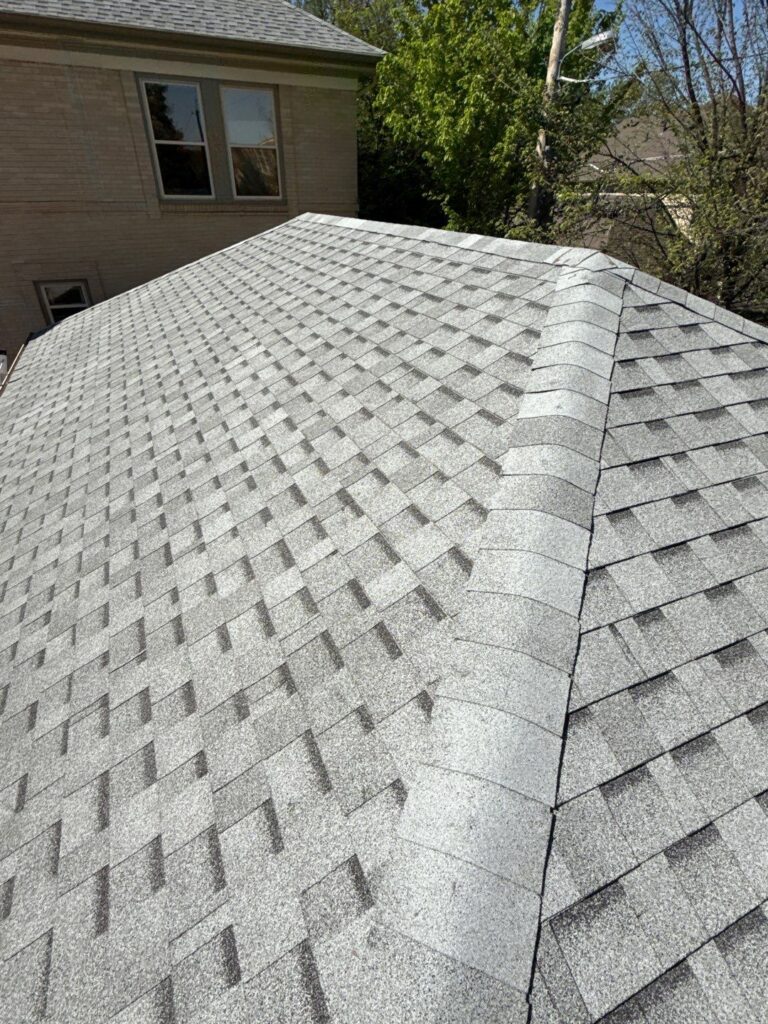
Severe weather is part of life in Colorado. Homeowners often deal with hailstorms that leave a trail of destruction—especially on roofs. But beyond physical repairs, many residents worry about a different kind of damage: rising insurance premiums. In this comprehensive guide, we examine how hail damage can influence insurance rates and how to navigate roofing decisions in hail-prone regions like Denver.
How Insurance Companies View Hail Damage Claims
When hail hits a neighborhood, insurers reassess risk across the board. This reevaluation doesn’t only impact those who file claims—entire ZIP codes may experience premium hikes. The reason is statistical risk. If hail is frequent in your area, your policy is seen as a higher liability, regardless of your personal claim history.
Homeowners insurance generally covers hail damage under the dwelling protection section. However, claim frequency, claim severity, and even your roof’s age can influence whether your premium increases after a storm. For those living in areas like Denver, understanding the fine print of your policy is essential.
Policy Terms That Influence Your Premium After a Hail Claim
Insurance providers use specific terms and policy structures to determine how claims affect premiums. Here are the core areas we emphasize when reviewing homeowners’ coverage:
- Hail-Specific Deductibles: Many providers set separate wind and hail deductibles, which can be significantly higher than your standard deductible. A 2% hail deductible on a $500,000 home equals $10,000 in out-of-pocket costs before coverage begins.
- Actual Cash Value vs. Replacement Cost: Certain policies only cover your roof’s depreciated worth rather than the full cost to replace it. Older roofs, particularly those over 10–15 years old, may receive minimal coverage without a full replacement policy.
- Claim History: Insurers maintain a database of previous claims. Filing multiple hail-related claims in a short time can result in non-renewal notices or steep rate hikes, even if damage was legitimate.
- Cosmetic Damage Exclusions: Some policies exclude cosmetic damage like shingle dents that don’t compromise performance. It’s critical to verify this language before initiating any claim.
When Not to File a Claim
Not every hailstorm warrants an insurance claim. For minor repairs under or near your deductible threshold, it may be more cost-effective to cover the expense out of pocket. Filing small claims often leads to cumulative premium increases over time.
In our evaluations across roofing in Denver, we advise homeowners to consider the long-term financial impact before filing a claim. A roof repair bill of $2,500 with a $2,000 deductible may only return $500 from the insurer but result in hundreds more per year in increased premiums.
How Hail Damage Repairs Affect Your Insurance Rate
Repair costs after a hailstorm vary depending on roof materials, roof slope, and accessibility. Below are common pricing factors:
- Asphalt Shingle Roof Replacement: The most common roofing material. Replacement due to severe hail can cost between $8,000 and $15,000 depending on size and pitch.
- Tile or Metal Roofs: While more resistant to damage, these materials are expensive to repair or replace and often lead to higher insurance claims.
- Siding and Gutter Damage: Hail often damages more than just roofs. These repairs add to the claim total and influence how insurers evaluate risk.
Higher claim values create a long-term profile for your property that can follow you even when switching insurance companies.
Regional Risk and Community-Wide Increases
In hail-prone areas, insurers may apply what’s called regional risk adjustment. When storms repeatedly impact Denver, policy rates may rise citywide regardless of individual claim histories.
This is especially relevant for those seeking roofing repair in Denver CO, where frequent storm activity prompts insurers to proactively increase rates to account for anticipated claims. It’s not uncommon to see premiums rise by 10–20% following a major hail event across neighborhoods, even if you haven’t filed a single claim.
How to Minimize Future Rate Increases
We help homeowners develop a proactive strategy to both protect their home and reduce the long-term impact on their premiums. This includes:
1. Upgrade to Impact-Resistant Roofing
Insurers often reward homeowners who install Class 4 impact-resistant shingles with premium discounts. These shingles withstand hail impact more effectively, reducing the likelihood of future claims.
2. Regular Inspections and Documentation
After any major storm, schedule a professional roof inspection—even if damage isn’t visible. Documentation helps validate or disprove storm-related issues later and supports your claim with time-stamped evidence.
3. Understand Policy Incentives
Some insurance companies in Denver provide incentives for roofing upgrades or implement deductible waivers if approved contractors are used. Know these details before disaster strikes.
4. Avoid Repeated Claims
When possible, group small repairs into a single claim. Multiple individual claims over a short time can label you a high-risk policyholder, triggering premium hikes or cancellation.
Choosing the Right Roofing Partner Matters
Not all roof repairs are equal. Working with experienced local contractors ensures better results and compliance with insurance adjusters. One trusted provider, Tried and True Roofing, delivers expert roofing services in Denver, Colorado, with deep knowledge of storm-related damage repair, policy navigation, and material upgrades that can lower future premiums.
When selecting a contractor, prioritize those who:
- Offer detailed hail damage reports for claims
- Use impact-resistant, code-compliant materials
- Have experience dealing with insurance adjusters
- Provide long-term workmanship warranties
Choosing the right team supports your repair quality and reduces the risk of disputes with your insurer.
Conclusion
Hail damage is a reality of life. While homeowners insurance is designed to offer financial relief, understanding your policy, the implications of filing a claim, and strategic repair planning can help control the hidden costs—like rising premiums. Smart decisions about materials, contractors, and claim timing empower you to protect your home and your wallet for the long term.
Whether you’re working with seasoned roofers in Denver or reviewing your insurance options, the key to long-term savings lies in preparation, precision, and proactive roofing management.

